On the identity of the "naval" Isis mentioned by Tacitus in "Germany" a real quarrel has opened up between those who consider it a Roman import -- which would have its reflection in the practice of “Navigium Isidis” - e who, like Georges Dumézil, considers it connected to an original Germanic goddess, Freyja or Nerthus. But, beyond the denominations, the category to which the goddess can be ascribed is the broadest one of the Great Goddesses of the archaic period, including Rhea and Cybele.
di Federica Zigarelli
of the religion of the Germanic tribes we do not have much news and the few handed down to us mostly flow into the Germany of Tacitus. The historian recalls four divinities that were the object of worship among the Germans: Mercury, Hercules, Mars and Isis [1]. The Romanization operation by virtue of which Tacitus translates indigenous divinities with figures already known to the Roman pantheon is evident [2]: in particular, assimilation concerns Mercury-Odhinn, Hercules-Thorr and Mars-Tyr. On the divinity that Tacitus identifies in Isis however, there are many more doubts.
According to a line of studies, the cult of Isis was imported by the Romans themselves [3] in the Germanic territories following the contacts between the two populations (Tacitus defines the Isiac cult as a "advecta religio"), while another - to which he ascribes Georges Dumezil - he maintains that it is an indigenous female divinity, since "for a goddess of fecundity seen by a Roman, the lunar label would not be more bizarre than for many mother goddesses or nurses of the Mediterranean world who receive it, starting with the oriental Isis and Semele ››. The first to mention the Germanic religion was Caesar, who remembers the Sun, Vulcan and the Moon as main divinities [4]; while there are greater uncertainties about the solar divinity, the correspondence between Vulcan and Thorr is plausible and once again a lunar goddess is mentioned: it seems that the Romans have testified from the beginning of their contacts with the Germans the existence in their sphere religious of a lunar deity, or rather characterized by them in these terms.
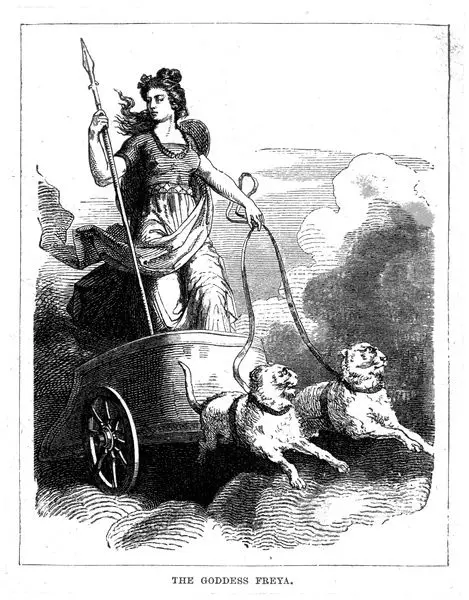
It is significant that there are similarities between Isis and Germanic Freya. First of all, both are remembered as goddesses with many names: like Isis, 'whose attributes and epithets were so numerous that in the hieroglyphs she is called' the goddess of many names', 'the goddess of a thousand names' [5] and in the Greek inscriptions 'the goddess of myriads of names'››, so also ‹lievo Freyja has several names, and the reason lies in the fact that she herself calls herself in different ways when she travels to unknown people in search of Ódhr. [6] It is called Mardöll and Hörn, Gefn and Sýr>> [7]. In this last excerpt we find another emblematic correspondence: like Isis in the Egyptian religion, Freyja in the Germanic-Norse one is also known for having traveled the world in search of her lost husband, Ódhr, who "makes long journeys and Freyia weeps in anticipation of him and his tears are tawny gold>> [8].
Crying seems to be inherent in the very name of Isis, which would derive from the onomatopoeic expression Ish-Ish, ‹‹'she who cries' because the moon was believed to shed dew and because Isis wept Osiris killed by Set>> [9]. A further point of convergence between the two goddesses could be a 'lunar' animal, the cat. In fact, it is also said about Freyja that "when she travels she drives her chariot pulled by two cats>> [10] and one of the names attributed to the Germanic goddess, Cheese, has been linked for morphological reasons to "goddess Syria" [11] with implicit allusion to the cats of the goddess>> [12]: in fact "for its quality as a lascivious animal and considered gifted with magical powers, it is sacred to Freyja, goddess of love and magic [...] More than for its lustful quality, the cat is nevertheless remembered for its supposed magical gifts (perhaps due to nocturnal habits and inner strength, sometimes dangerous, hidden under a sly appearance)>> [13].

It is known that in Egypt the cat was a sacred animal, an earthly representation of the goddess Bastet. She was originally considered the daughter of Ra, therefore a solar goddess, but in the course of theological evolution she was later described as the daughter of Isis. The transformation from solar goddess to lunar goddess [14] is also proven by the fact that inGreek interpretation Bastet was associated with Artemideindeed it seems that in more recent times there was even a tendency to an iconographic assimilation between Bastet and Isis.
A peculiarity of the Germanic Isis is instead the Tacitian association between the goddess and the ship symbol. Freyja does not seem to be usually characterized by this type of representation nor to have a particular marine value, but the father Njordhr Yes. Like his sons Freyr (god of peace, prosperity and fertility) and Freyja (goddess of love and pleasure), Njördhr is also a Germanic god of the Third Function, but his area of relevance is specifically the sea as god of fishing and protector of sailors. The divine figure associated with the ship is however female, a 'Germanic Isis'.
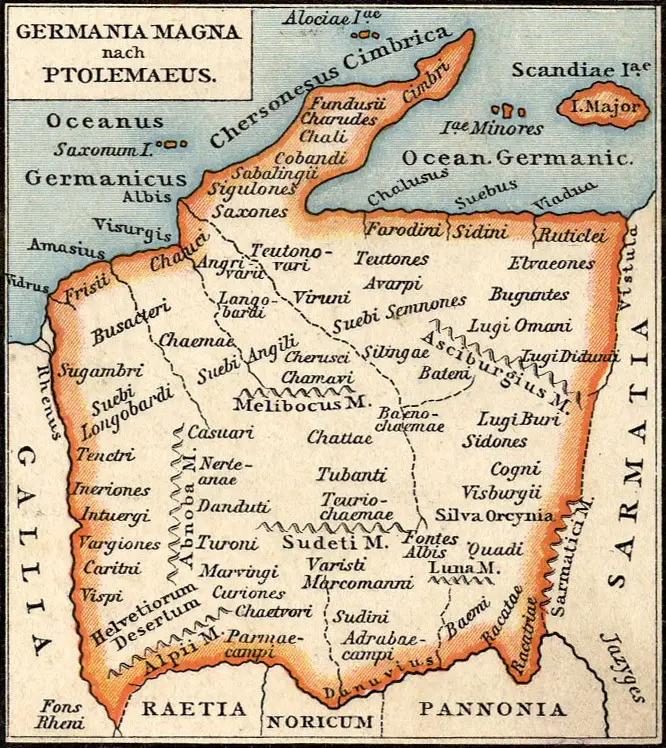
In Germany the cult of a goddess known as nerthus, linked to a ceremony in which a votive chariot appears - a manifestation of the goddess herself - pulled by cows and adorned with sacred fabrics. It was led by the priest of the divinity to the population, then brought back to the sanctuary of Nerthus, located near a sacred wood, in an unspecified insular place to the north; in the end the chariot was immersed in a hidden lake for a ritual washing. This last operation was entrusted to some participants of the rite (servants of the goddess) destined for death and swallowed by the lake itself [15].
A link is believed to exist between Njördhr and Nerthus. A hypothesis - towards which Dumézil e Isnardi Church they are inclined - identify Njördhr and Nerthus in the same divinity. This idea would not seem unfounded: first of all the etymology leads Njördhr back to the Proto-Scandinavian root * Nerthu- [16] "in which a concept of life-giving and procreative power is understood›› [17]; both are gods of water, which can take on terrorist aspects and engulf men (whether they are the servants killed in a lake during a ritual ceremony or the sailors drowned in the waters of the sea during the navigation); both figures are related to fertility and the Third function: Nerthus is defined by Tacitus as "Terra Mater ›› and only while the goddess is with men would they know peace and prosperity.
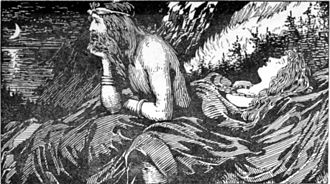
The diversification of the sexual gender according to Dumézil is inherent in marine folklore of Scandinavia: ‹‹ Most of the stories that are told about a genius of the sea are known both in the variants in which this genius is masculine and in those where it is feminine ›› [18]. According to another perspective, Njördhr and Nerthus would constitute the same divinity Postgraduate Course , or a married couple or twins, "of which Freyr and Freyja were originally just epithets (lit. sir and madam)>> [19]. Dumézil actually notes that in the Indo-European religions a recurring archetype associated with the Third function is the twin couple, often specifically related to navigation. [20].
In any case, Nerthus clearly appears in the guise of Magna mater, which can manifest itself as dispenser of prosperity, fecundity and harmony, but also as a bearer of death [21]: in exchange for her benevolence towards men she would demand a human sacrifice. This double - and apparently opposite - value of life and death is inherent not only in the nature of the Great Mothers, but also in the element of water that Tacitus associates with Nerthus: water recalls both regeneration and life as well as the impending death.
In various peoples, looking at one's reflection in a body of water was synonymous with misfortune or even imminent death: the reflection is the exteriorization of one's soul, which when it leaves the body becomes particularly vulnerable; the ancients "feared that the spirits of the water would drag the reflection or soul of the person under the water, thereby causing him to die. This is probably the origin of the classic story of the bel Narcissus who languished and died from seeing his reflection in the water>> [22].
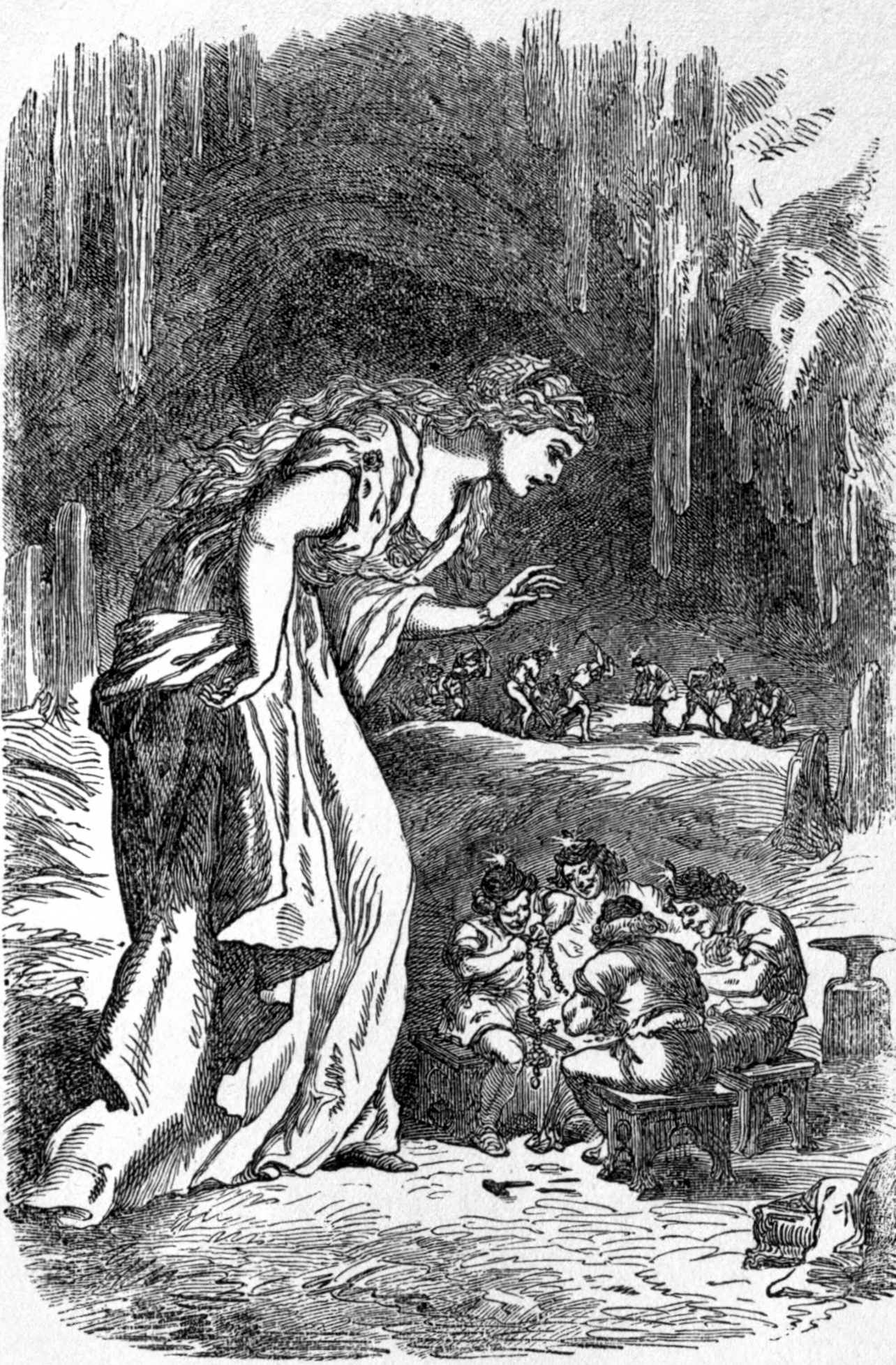
In the manuscript tradition, however, there is a significant variant: some codices have, in place of Nerthus, Herthum. In this case the goddess's sphere of competence would explicitly refer to the world of earth (English Earth, German Earth). While accepting this lesson, the primitive function of divinity would not change, on the contrary: the earth is the complementary element of water and the figure of the Great Mother - to which Nerthus / Herthum is assimilated - is venerated as protector of nature in all its manifestations. Not surprisingly, the expression Terra Mater it seems a Tacitian variation of Magna mater, a phrase notoriously attributed to Cybele and to female divinities who have procreative prerogatives. According to Chiesa Isnardi, the cult of Nerthus testifies to the antiquity in the Germanic religion of the reverence for the Earth, understood as a fertile mother: the mother of Thorr and Odhinn's wife is precisely Jörd, the ‹earth››.
The term with which the ship of the German Isis is mentioned in the Tacitian iconography could cause perplexity: "liburnian››, a fast warship that the Romans borrowed from the Liburnian population, settled in the Dalmatian territory; this type of ship spread in the Roman navy from the second half of the XNUMXst century BC and seems to have played a decisive role in the victory of Augustus in the battle of Actium. It might seem strange that the Latin historian refers specifically to a liburnum, but in the imperial age - due to the spread of this boat - the term had lost the specific meaning it originally had, assuming a much more general meaning: probably ‹‹liburna› ›At the time of Tacitus it could indicate any type of ship. On the other hand, an emblematic term seems to be "vehicle››, with which Tacitus defines Nerthus's chariot. This noun literally alludes to a means of transport of a generic nature, that is it could translate as much as ‹‹ wagon› ›, as well as‹ ‹ship››.

In this regard, the ‹Earning carrus navalis ›› del Navigium Isidis [23], a Roman festival of oriental origin held on the day of the first full moon after the equinox. It was celebrated on this occasion the journey of Isis - in the guise of the goddess of navigation - in search of her husband Osiris, Through a masked procession [24] following a wooden boat - representation of the goddess herself - transported by the waters of the Tiber or a real wheeled ship [25]. It was demonstrated that [26]
"The Church, after 391, when Catholicism was made official by Theodosius as the religion of the Roman Empire, had divided the content of the feast of the Navigium Isidis, merging the resurrection of the dismembered body of Osiris [= Christ] into the Easter, then after the spring equinox, and the procession of the naval chariot, with masks, in Carnival, moved back forty days>>.
It is possible that the ships ordered by Caligula and placed in the lake of Nemi were made in function of this ritual ceremony and it is interesting to note that in this place Diana was revered just like a goddess of birth and fertility.
The category to which Isis and Nerthus are therefore ascribed is the world of Great Mothers, goddesses, ladies and guarantors of fertility, frequently linked in iconographies to sacred ablution and to the chariot, which they use to travel among men: remember the aforementioned Freyja chariot pulled by two cats, the Rhea's chariot pulled by lions [27] and above all the numerous representations of Cybele on a wagon [28] (the correspondence between the Virgilian verses referring to Cybele "qualis Berecyntia mater invehitur curru Phrygias turrita for urbes>> [29] and the Tacitian expression referring to Nerthus: "Terram matrem […] invehi populis arbitrantur››).
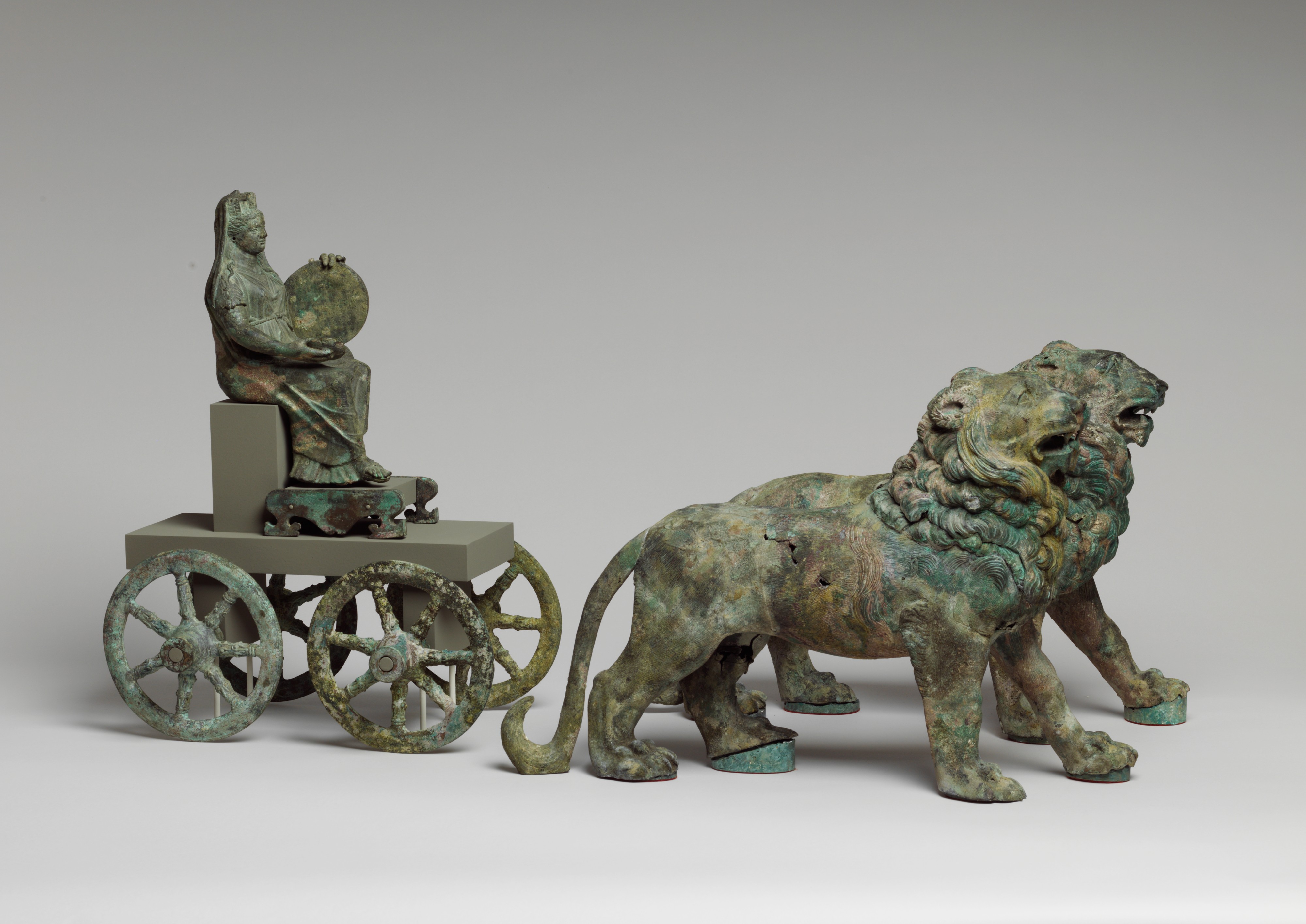
As for all the Great Mothers, the cult practice in honor of Nerthus is also distinguished by the chariot, drawn not by chance by cows; this animal "is the incarnation of the female nourishing principle, the primordial mother who, feeding on grass, takes on the vital forces of the earth and transforms them into food. It is therefore in a certain sense the earth itself that feeds its children>> [30]. In the ancient world these iconographies translated into cultic ceremonies characterized by the transport of a divine simulacrum (often in wood - ξόανον - transported on a cart), which could subsequently become the subject of a purification rite through a sacred bath [31].
In the Scandinavian territories it is attested the existence of practices that in ancient times provided cult ships and wagons followed by real processions of the faithful: there are news of ritual processions connected to vegetation cults and by extension to the god Freyr, "The chariot with the effigy of which he was carried around the country to dispense peace and fruitfulness" (same circumstance handed down by Tacitus, with Nerthus in place of Freyr); Archaeologically, these ritual dynamics are supported by the discovery of pre-Roman chariots and rock carvings of Bronze Age cult ships:
<<the voyage by sea would be a sort of procession, the transit in the underworld from which new vital force is drawn>>.

Both the chariot and the ship are not only manifestations of divinity on earth, but also have a fort funerary value: "They are vehicles of a soul that has to experience a new world" and they represent metaphorically the passage, the crossing from life to death; in this sense it is perhaps emblematic that the purification of Nerthus's chariot led to the death of those who had participated in the rite.
The similarities between Isis, Freyja and Nerthus appear clear (the use of the chariot, the search for the husband, the Third function, the lunar connotation), which could have contributed to creating superimpositions in Tacitus: the strong religious syncretism of which it is imbued the Roman era makes it very difficult to perfectly delineate the cultic dynamics of these goddesses. It is possible that the Tacitian description of the sacred ablution of Nerthus' chariot is partly influenced by the Navigium Isidis and it is not to be excluded that the Germanic Isis is a figure created thanks to the coexistence of Roman elements (cult of Cybele, Navigium Isidis) and Germanic elements (Freyja's chariot, the local existence of a Great Mother of fertility, possibly to be identified in an ancient female form of Njördhr), an overlap probably also due to the reshuffle carried out by the Latin historian.
A serious obstacle to today's investigation is in fact the problematic nature of the sources available to us: Nerthus is cited exclusively in the Germany, work notoriously tendentious to the extent that Tacitus projects Roman models into Germanic society or uses the expedient of contrast, underlining the overthrow of the usual Roman norms among the Germans. In this sense the correspondence between Diana seems quite suspicious Nemorensis and Nerthus: in both cases there is a place consisting of a lake and a wood consecrated to a goddess of the Third function, in both rites the figure of a high priest stands out [32] (The king of the woods on one side and the priest driving Nerthus's chariot on the other).
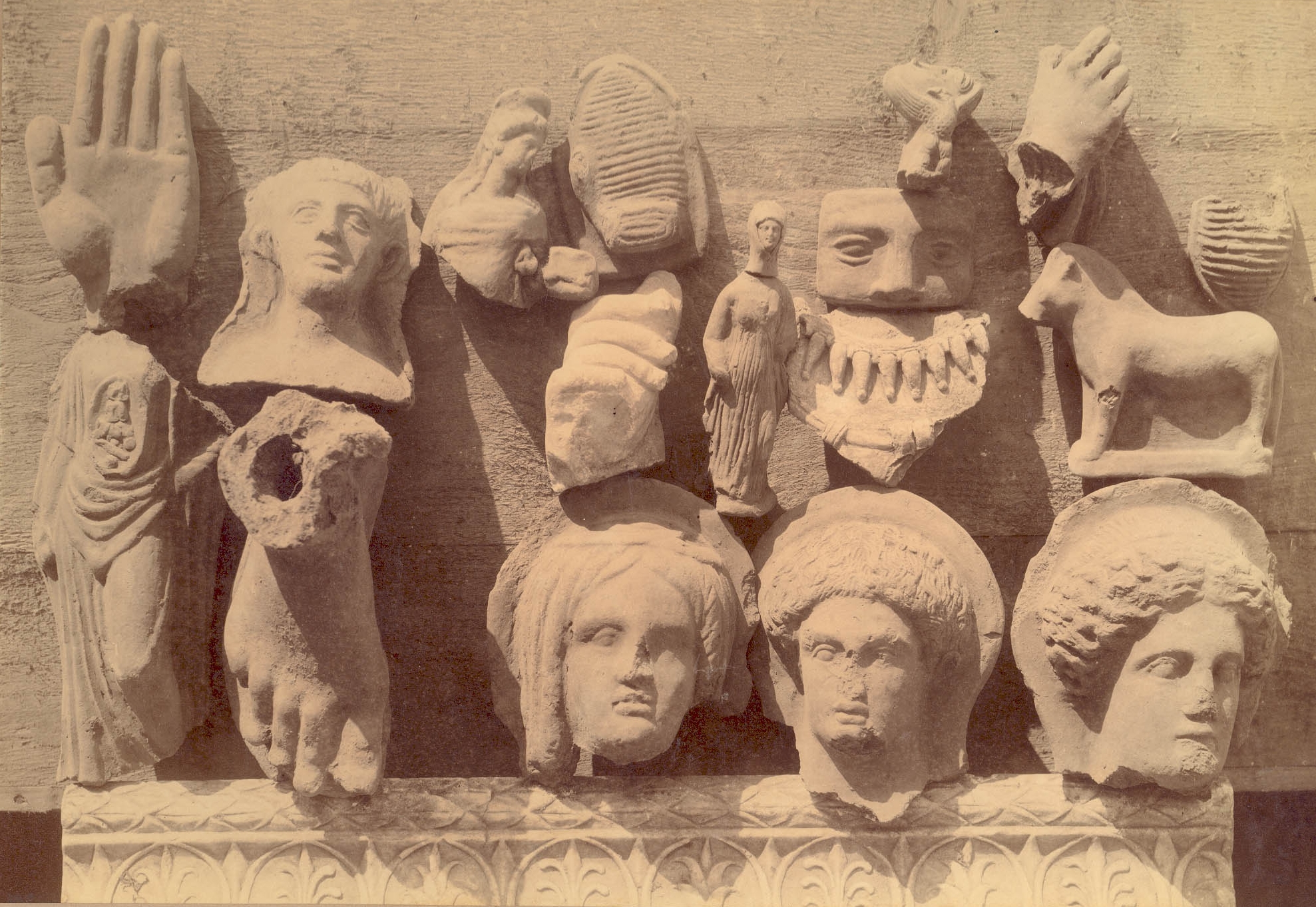
It could even be assumed that Nerthus' wooden chariot corresponds to theDiana tree Nemorensis: both personify the goddess and become the tool by which the high priest manages to establish an intimate bond with her [33] (Tacitus says that only the priest of Nerthus would have had the privilege of touching the sacred bandages of the goddess); moreover in both cults the figure of the servant is distinguished, who in Nemi is the only one who can cut off a branch of the sacred tree and challenge the highest priest, while among the Germans it is up to the servants of the goddess to purify her clothes. Be the cult of Diana Nemorensis that that of Nerthus have the celebration of a human sacrifice, since the goddess would require a tribute of blood in exchange for her favor, a costume that "has all the flavor of a barbaric age>> [34]. In light of these parallels, it would perhaps not be unfounded to argue the possible overlap between the two divinities.
Furthermore, there is no other source contemporary or shortly after Tacitus - above all non-Roman - that can confirm or deny the information he has handed down to us. Tacitian information about the world of continental Germans was therefore read from the much richer sources on the Norse religion, which derives directly from the Germanic one. However, a difficulty also emerges here, as the documents relating to the Norse world are recent and late: the main works on Norse mythology / religion are the poetic Edda and the prose Edda, whose content - while referring to pre-Christian Scandinavian culture - was drawn up only in the XNUMXth century, when Christianity had already established itself in the North. It is therefore probable that even the news on the Scandinavian world has been partly manipulated and already influenced by Latin culture or in any case by elements extraneous to the most ancient Germanic religion. [35].
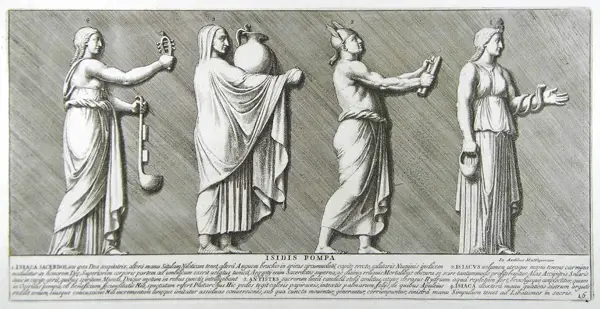
Note:
[1] Tacit, Germany, Ix.
[2] "The importation of foreign cults into Rome is counterbalanced by the movement of the Roman cults towards the conquered territories. […] The phenomenon that sees the overlapping of divinities of different origins is not extraneous to this process of "import / export" of the gods: Roman gods and goddesses give their names to foreign divinities. This phenomenon of "translation" is called interpretation. Tacitus (Germany XLIII, 4-5) is the first author to use the expression Roman interpretation, in an attempt to establish a correspondence between a pair of German divinities and the Greco-Roman divinities Castor and Pollux ››, cf. P. Borgeaud, F. Prescendi, D. Bonanno, G. Pironti, p. 32.
[3] The cult of Isis was widely spread in Rome at the beginning of the XNUMXst century AD if Ovid already replaces in a aition mythological Leto with Isis, evidently both intended as goddesses of fertility.
[4] De bello Gallico VI 21, 2
[5] frazer, The golden branch, P. 459.
[6] Character of whom no cult is mentioned, nevertheless the root of Ódhr is clearly the same as Ódhinn 'and expresses a concept of encroachment, excitement and divine fury ››. It would seem plausible a closeness, if not a real identification between the two gods, also by virtue of the correspondence of their wives, Freyja and Frigg, both goddesses of fertility: but "they are two different aspects of the same figure or rather two incarnations successions of a single divinity? ››, cf. Isnardi Church p. 286.
[7] Snorri, Edda in prose, chap. 35.
[8] Ibid.
[9] serious, The white goddess, P. 387.
[10] Snorri, Edda in prose, chap. 24.
[11] Atargatis, Syriac goddess assimilated to Rhea and Cybele and known for the orgiastic nature of her cult.
[12] Snorri, Edda in prose, commentary Adelphi, p. 174
[13] "It therefore has a particular relationship with witches and wizards", Chiesa Isnardi p. 572.
[14] Edward Topsell, Topsell's Histories of Beasts: “The Egyptians observed the various phases of the moon in the eyes of a cat because with its full moon they shine more while their brightness decreases with the waning moon”.
[15] Germany XL. The lake was seen in ancient times as a place of contact between the human world and the supernatural world of spirits, in the same way the sacred wood. A datum already recorded by Tacitus is the strong naturalistic character of the Germanic religion: the gods would have been venerated not in artificial places like temples, but in natural and sacred places. The wood would seem to be understood at times not only as the abode of gods and spirits, but precisely as a sacred entity: "in the Christian laws of the Swedish Uppland the prohibition against believing in the woods is clearly expressed", Chiesa Isnardi p. 483.
[16] Chiesa Isnardi etymologically links this root to other Indo-European languages: ancient Irish naer ‹‹ Strength› ›, to the ancient Indian nar-, Armenian air, Greek ἀνήρ ‹‹man››, Latin neriosus <<loud>>. Dumézil, on the other hand, notes that "the Indo-Europeans had a common word for the 'ship' (Sanskrit nah, Latin nauis), and it is this word that is found in the name of the mythical abode of Njördhr, Noâtûn, 'the Enclosure of the Ships' ››.
[17] Isnardi Church, The Nordic myths, P. 277.
[18] Think of the difference between Poseidon and the Nereids, daughters of Nereus, whose name may have an affinity with Nerthus / Njördhr.
[19] oniga, Tacit. Opera omnia.
[20] In the Germanic religion Freyr and Freyja or Njordhr and Freyr are distinguished, perhaps originally intended precisely as twins: "various indications lead one to think that other Germans and even some Scandinavians had retained the twin formula"; "Of Freyr it is also said that he possesses a magical ship, which he can fold and put in his pocket and which goes faster than any other: Njordhr and Freyr are closely united, they have the same fruitful action, the same love for peace, and the formulas willingly associate them, indiscriminately ››. In the Greek one the Dioscuri "who, despite notable differences, retain many characteristics of the Indo-European twins and are the protectors of the sailors ››, in the Vedic religion the Nasatya" a pair of barely distinguishable twins "," a good deed of which is having saved a man from shipwreck ››.
[21] In general Nerthus / Herthum is connected to female figures of prosperity, but also of death: Frigg, Odhinn's wife, the Lady Holla, "served by a priest who was responsible for preparing her chariot with a sail, so that she could reappear among men to spreading its benefits ››, the goddess Holda «who roams the villages […] to distribute blessings and curses. She is an agrarian deity, goddess of the earth, responsible for the fertility of the soil. The procession that pays homage to her is always followed by a good harvest. Like Nerthus […] she bathes in lakes. The benign goddess splits into a fearsome goddess. She is a deity of death who kidnaps the souls of children ››, cf. Bulteau, The daughters of the waters, pp. 106-107.
[22] frazer, The golden branch.
[23] Hence our Carnival, despite the Christian tradition has tried to change the etymology to 'carnem levare' to deform the meaning of the party and transform it into a sort of preparation for Lent.
[24] Apollodorus, With. XI
[25] "And in the maritime or river cities of the ancient world the chariot, after being kept in the temple of the goddess Isis during the winter, was transported to the sea, or to the river, to celebrate the goddess, precisely as the protector of navigators, and thus inaugurating the new season for navigation. Just as is still done today, in the seaside or river towns, with the Virgin Mary Stella Maris. And it is no coincidence that the most famous Carnivals, with their allegorical "naval floats", are those that are celebrated, or celebrated, in cities by the sea, such as Viareggio, Venice and Rio de Janeiro, or on large rivers, such as Cologne and Basel on the Rhine, and Rome on the Tiber ››, cf. Alinei, Carnival: from the naval chariot of Isis to Maria Stella Maris.
[26] Alinei. The navigium Isidis has still left evident traces today in feasts in which the goddess of Egyptian origin was replaced by the Virgin Mary: "in Brindisi, on the Saturday dedicated to her feast, the statue of the Virgin Mary Stella Maris, after having been worshiped in the niche of the fishermen's village, where among decorations, balloons, flags and precious blankets it had been placed, she is first accompanied to the boat by the flag-wavers of Oria, between rolls of drums and trumpets, and then placed on a 'boat and carried in procession by sea. Many faithful then follow the wake of the boat with the statue on board their boats, and all the way they sing and praise the Star of the sea, their protector ››.
[27] Nonn. Dionysius. IX 160-161.
[28] The symmetry between chariot and ship, already present in Navigium Isidis, could also be implied in the story that describes the arrival of the cult of Cybele among the Romans: after the consultation of the Sibillini Books it was decided to transport a sacred stone - representation of the goddess - from Phrygia to Rome by sea. "A story was drawn up around this journey that took place historically. The ship carrying the "statue" which reached the mouth of the Tiber ran aground on the bottom. All efforts of men to continue the journey were in vain. Claudia, a young Roman woman unjustly accused of libertine behavior, asked the goddess to grant her a privilege: if the goddess had deemed her accusations against her unfounded, she would then have allowed her to bring the ship to Rome. The goddess agreed and the young woman took the ship to Rome, dragging it with a rope ››. Subsequently the stone would have been moved on a cart pulled by oxen adorned with flowers and carried in a procession to its new location, the Temple of Victory on the Palatine Hill: like the Tacitian account of Nerthus, this story also refers to cultural practices based on transport. of a divine simulacrum through the use of the chariot / ship and on a procession.
[29] Verg. Aen. VI 783-784.
[30] Isnardi Church, p. 566.
[31] For example, in Boeotia there was the panbeotic feast of the gods Daidala Megala in honor of Hera, during which wooden simulacra "are taken to the banks of the Asopus, where they will presumably be washed, and then placed on wagons (each with a nympheutry next), which will form the pumps which must lead them to the top of the Citerone, where the final sacrifice will take place ››, cf. The guard. "The symbol of Cybele was also carried in procession to the Almone on a chariot pulled by iunctae boves (Ovid. Fasti IV, 346), to be then 'washed' in the waters of the small tributary of the Tiber during the festival called laundry, on March 27, in the calendar frame of the rituals that the Megalesia, the feast of the Magna Mater ››, cf. Germany, Rizzoli. Washing is an element that often accompanies death: think of Agamemnon killed in a bathtub by Clytemnestra (Graves, p. 364). In the Greek tradition, at a certain point the meanings of 'tomb' and 'tub' get confused: δροίτη is used in the Oresteia with the meaning of 'bathtub', but given that in the Aeschylian context the tub also represents the place of death of Agamemnon, it would seem that in the subsequent literary tradition the same term was also used in the pure meaning of 'coffin' (Parth. Fr. 44 Martini). Think also of Osiris, persuaded by Seth to lie down in a tomb-tub and then thrown into the Nile. The bath therefore refers in initiation practices to a ritual death, which would mark the distancing from one status native to.
[32] Tacit, Germany XL, 2: "East in insula Oceani castum nemus, dicatumque in eo vehiculum, veste contectum; to draw on a concessum priests ››.
[33] "If the sacred tree on which her life depended was believed, as is probable, to be a kind of personification of her, the priest may have not only venerated it as a goddess, but embraced it as a wife", Frazer p. 17.
[34] Frazer, p. 11.
[35] More ancient and pre-Christian testimonies are of an archaeological nature, especially runic inscriptions written in an alphabet prior to the importation of the Latin one; cf. Isnardi Church pp. 29, 677-685.
Bibliography:
- Tacit, Agricola's life e Germany, Rizzoli 2017
- P. Borgeaud, F. Pick up, D. Bonanno, G. Pironti, Ancient religions. A comparative introductionCarocci 2017
- J. Frazer, The golden branchBollati Boringhieri 2012
- G. Isnardi Church, The Nordic myths, Longanesi 2008
- R. Graves, The white goddess, Adelphi 2009
- R. Oniga, Tacit. Opera omnia, Einaudi 2003
- M. Alinei, Carnival: from the naval chariot of Isis to Maria Stella Maris
- G. Dumezil, The gods of the Germans, Adelphi 1974
- F. LaGuardia, An aition for two parties, 'Kernos. Revue internationale et pluridisciplinaire de religion grecque antique 'XXVII 2014

3 comments on “Germanic Isis"